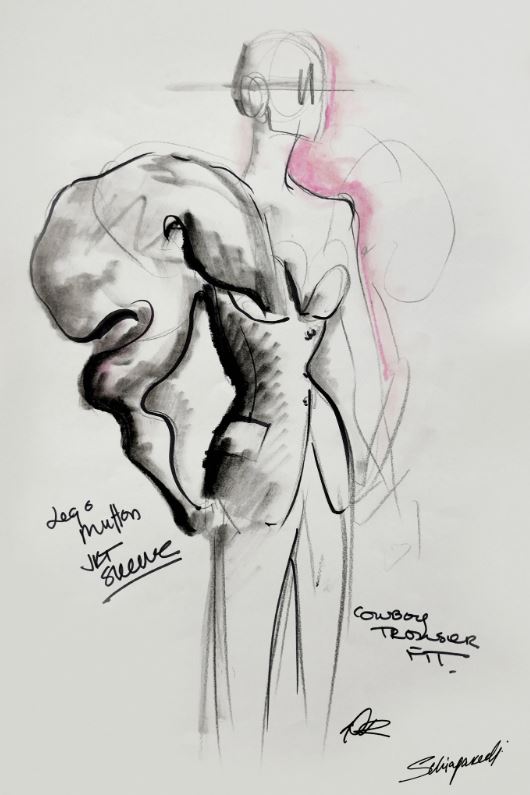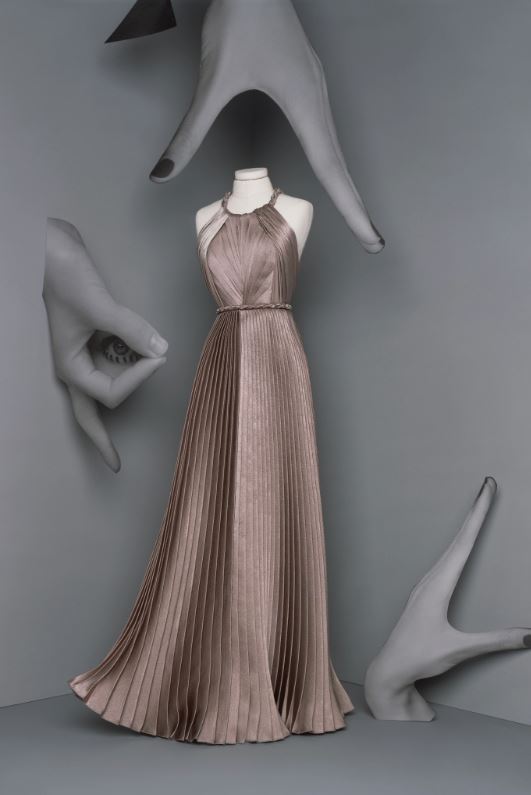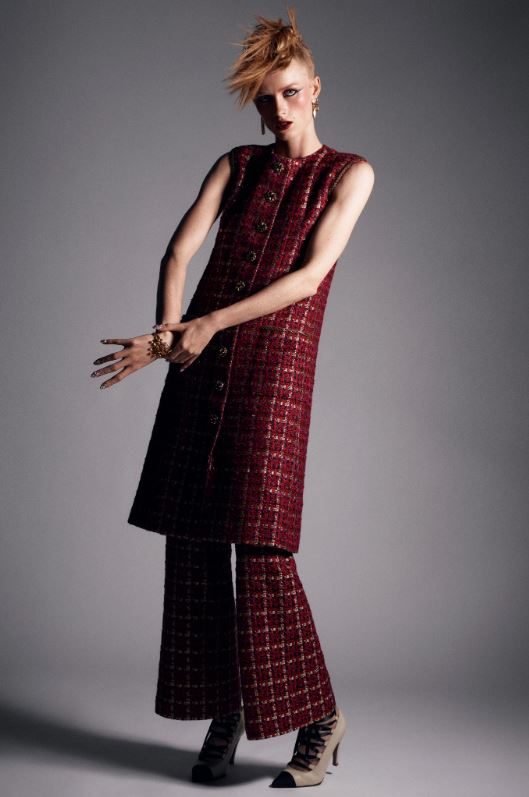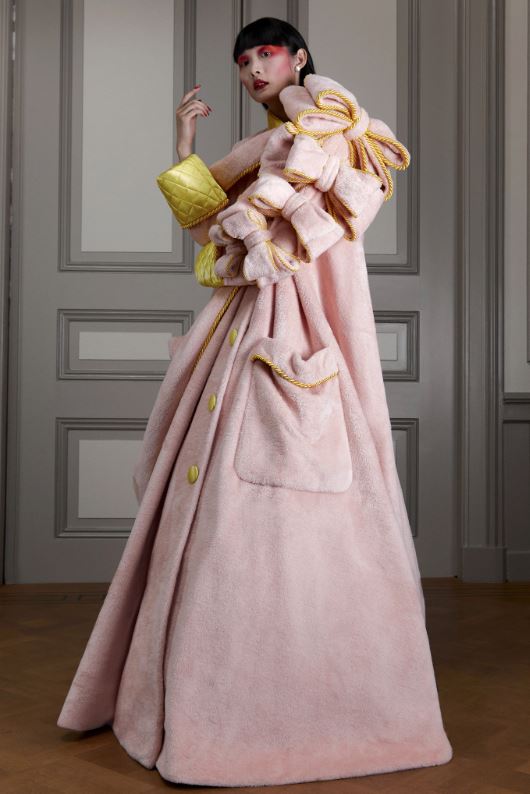This year’s Paris Haute Couture Week went digital for the first time in its history. From July 6 to 8, the Fédération de la Haute Couture et de la Mode hosted videos from accredited couture houses on a specific platform for the Week.
The opening video features Naomi Campbell wearing a “Phenomenally Black” T-shirt discussing the long fight for equality and diversity and calling for action with vision in Paris Haute Couture, home of enlightenment. We are left feeling with a powerful sense of urgency for equity in the industry.
Then, the maisons’ videos were rolled out on a schedule to mimic the flow of a live fashion show. However, the videos were anything but your average catwalk event. The maisons took full creative liberty on these. We picked four haute couture collections from each of the days to bring to you:

Schiaparelli: show opener, July 6
Elsa Schiaparelli designed for the modern woman in troubling times. Did you know she was actually Chanel’s fierce competitor during the 1930s in the face of a young WW2? Daniel Rosenberry, Schiaparelli’s artistic director, said, “her work reflected the chaos and hope of the turbulent era in which she lived.”
Rosenberry also pointed out that today we are asking ourselves similarly big questions in the face of a global pandemic: What does art look like? What is identity? How do we dress for the end of the world? The Schiaparelli haute couture video included a taste of this modern solitude.
Due to the Coronavirus pandemic, Schiaparelli could not host a presentation this season. In fact, high fashion magazines like Vogue are making exceptions to policies and writing about this collection via photos, video, and remote interviews. In the Haute Couture Week video, we see Rosenberry leaving his NYC apartment, putting a mask on and sketching an imaginary collection, or “collection imaginaire” in Washington Square Park.
The video is an ode to what could have been, and it was one of our favorites. The resulting collection, which was actually so well received it’s being produced on a made-to-order basis, was all but timeless and classic. We’ve seen the words “disobedient” and “chaos” popping up all over to describe this collection.
This is what caught our eye: tape measure glasses, skirts draped from belts, an upside down mermaid gown with the volume by the shoulders.These pieces personified the idea of surrealism, the inversion of reality— and they could not be more relevant than they are right now. It truly is a spectacular testament to the soul of the Schiaparelli house.

Christian Dior: midday, July 6
The Christian Dior video stood out from the rest not only because of the maison’s very famous name. The video was a truly magical short film that was a testament to the timeless and ethereal, much unlike the Schiaparelli imaginary collection.
Matteo Garrone, the Italian filmmaker who directed last year’s Pinocchio, created this short surrealist movie titled Le Mythe Dior. In Le Mythe Dior, couriers bring a trunk of shrunken clothes to the woods. In this fairy tale, the couture atelier provides the magic that transforms them into real garments. The fairy-like women who star in the short film get to keep the clothes.
The collection shown in doll sized proportions has its roots in post-WW2 history, similar to the Schiaparelli theme. According to Vogue, in 1945 amid the devastation of World War II, materials were in short supply. Thus, Paris designers created clothes for doll forms one-third the size of their human female counterparts.
Clearly, the video is saying something about the state of affairs we find ourselves in this year. It is pleasing to the eye and to the imagination. Our only complaint about the video is the lack of inclusion. The cast is very narrowly chosen and leaves a lot to be desired when it comes to intersectional feminism.

Paris Haute Couture
Chanel: day opener, July 7
It must not be a surprise that Chanel headlines the second day of the Paris Haute Couture Week when Schiaparelli headlined the first. And they could not be more contradictory.
This collection was an edited set of 30 looks, manifested in photography and lookbook-esque short shots. Clearly, Chanel was thinking of timelessness and the pillars of fashion design as it curated this collection. The collection featured classic Chanel elements- tweed, for example.
The first ten looks are tweed worked for day and night alike. We see these elements in classic silhouettes such as a knee-length tunic worn over boot-leg pants, and minidress with the traditional Chanel braid trim reworked in rhinestones.
There is, however, just a touch of eccentricism later in the collection. We begin to see elements of it in punk rock feather hair pieces and 80s style lace-up shoes. This begins in a short frothy taffeta dress and a full-skirted retro cocktail dress with black and white lace with a splash of pink lacquered lace.
Virginie Viard, the creative director of Chanel, aptly describes the looks as “casual and grand.” We can clearly see this is well-behaved couture, so to speak.
“Haute couture? It’s forever; it’s for always,” said Viard in a Vogue interview.

Paris Haute Couture
Viktor & Rolf: end of the day, July 8
The video begins by stating the Viktor & Rolf collection is three wardrobes for three mindsets in these extraordinary times of change. Between graphically designed balloon letters spelling “change,” we see a model walking in with a dressing gown in a silky, somber dark blue. The man-made satin with cloud details in lace evokes feelings of anger and sadness all at once.
This was the first of three outfits that were fitting for the gloom of these days, as the narrator in the video says. The second look was a masculine looking robe, which is only meant to be worn at home.
Viktor Horsting and Rolf Snoeren were clearly cheeky and clever about couture in the time of the coronavirus. The capsule wardrobes show clothes for the home and they acknowledge pandemic-like emotional states. We begin to see exaggerated emotion in the first wave, exemplified by faux leather spikes coming off a coat with long, slouchy sleeves that “accentuate the gravitas of the moment.”
We can all relate.
Then, the doom and gloom of the first capsule gives way to a wave of mixed emotions. A chemise in pink comes out. We begin to see the polka dot motif is actually contradictory emojis: some happy, some ecstatic, some sad and others angry. The narrator says this piece is a nod to the perplexing, “sometimes up, then again down” hypnotism of social media that leaves us feeling unstable.
We feel a continuation of this in the exhibit of the next piece: a pink and canary-yellow fuzzy robe that entangles the shoulders with diagonal sashes and lines one arm with giant bows descending in size. The anxiety of the asymmetry is palpable.
The last three ensembles show that the previous gloom, then mania give way to expressions of unconditional love and optimism. A free flowing skirt on a negligee comes on screen as melancholy becomes serenity. We can’t help but notice the same encrustations of lace as on the first nightgown, but this time they create an opposite effect.
The stunning finale proudly features many hearts to show unity. The narrator, who advocates for change with this final safe and pretty capsule wardrobe, finishes the video with this inspiring message:
“We all deserve to be loved, regardless of age, color, gender, race, religion, or sexuality.”
Viktor & Rolf Fall 2020 Couture
all images courtesy of Vogue
